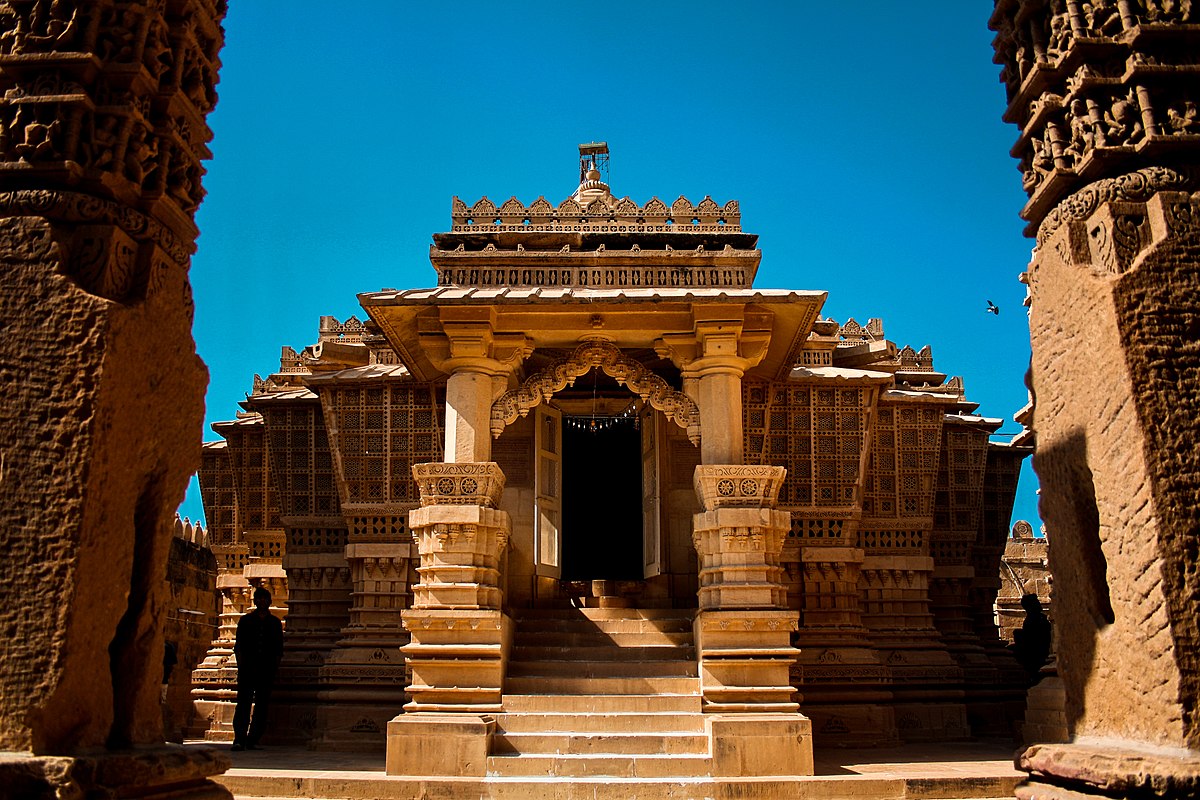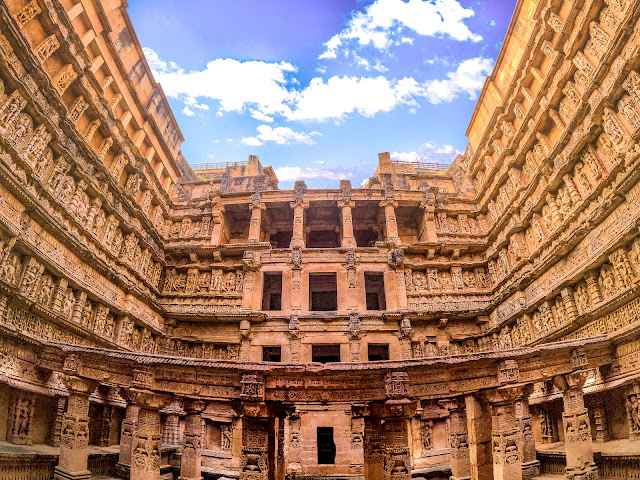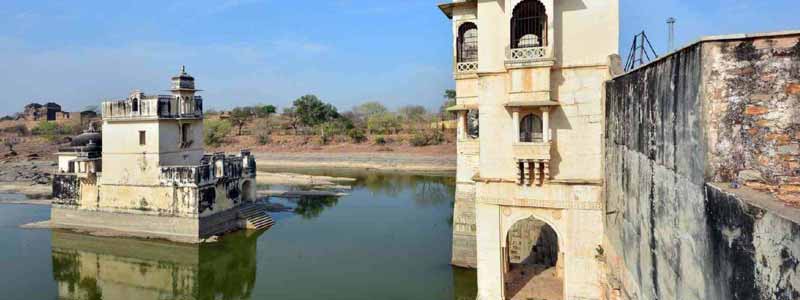India is a land of several legendary folk tales based on love and affection. The tales of Radha-Krishna and their eternal love are still celebrated in the streets of Vrindavan and Mathura. Similarly, Whenever we hear words like the epitome of love or “Pyaar ki nishani” in Hindi clichés, we are reminded of the Taj Mahal built in Agra, Uttar Pradesh. According to Historians, this grand monument was built by the Mughal Emperor Shahjahan upon the death of his 4th wife Mumtaz who died while giving birth to their 14th child. Four centuries later, the Taj mahal still manages to impress visitors with its delicate carvings by the craftsmen and the calligraphy done on the white marble adds a natural sheen to the monument which is second to none.
However, the Taj Mahal is not the only vestige in India that was constructed by the King in the memory of his wife, instead, many other relics around India were built by Kings or Queens in remembrance of their respective spouses. Not only this But There have been many other significant places in India which have witnessed some unique anecdotes of endless affection and sacrifice. If we don’t explore these relics for the importance they carry, then that would be unfair. So I am here today to introduce you to these places so that the Travellers in you can explore and relive those tales which are now embedded into the walls of the monuments. Let’s begin!!
Table of Contents
- Lodurva, Jaiselmer, Rajasthan, India
- How to reach lodhurva, India?
- Rani ki Vav, Patan, Gujarat, India
- How to reach Rani ki Vav, India?
- Padmini Palace, Chittorgarh, Rajasthan, India
- How to Reach Padmini Palace, India?
- Conclusion
1. Lodurva, Jaiselmer, Rajasthan, India

Lodurva is a town in Rajasthan, India which was once ruled by the Bhatti Rajputs till they decided to shift their capital to Jaiselmer in 1156. Prominently famous for a great number of Peacocks, Lodhurva is a ruined borough with numerous Jain and Hindu temples, Amar Sagar, Bada Bagh, Moomal’s Medhi, and the Dried River of Kak. Interestingly, Lodurva is also known for the epic love saga of Moomal and Rana Mahendra.
Nobody knows when this ill-fated saga took place but this most presumably occurred when the Kak river used to flow in full swing and aura. Moomal was a Rajput princess whose beauty was popular in the whole region of Jaiselmer and far and wide. She had decided to get married to the man who would win her heart with his bravery and intelligence. One day, Rana Mahendra Sodha, the then Ruler of Umerkot (now Sindh, Pakistan) reached the river bank of Kak while hunting. He was attracted by the magical Kak. While he was resting there, Mumal saw him from her palace’s window. She eventually sent him and his friends some refreshments and invited them to take a rest in the Palace till the next morning.
Reaching the palace was not as easy as it seemed, because Mumal and her seven sisters along with some attendants had created a web of magic in the Kak mahal to test the intelligence of those who intended to marry her. However, None of the kings or princes could succeed. Rana Mahendra Sodha, who was courageous and intelligent, succeeded in reaching the Palace without being harmed. This impressed Mumal and she decided to make him her consort. The next Morning, Mahendra cane back to Umerkot but his mind was filled with Mumal’s thoughts. He decides to go and meet mumal every night on his horse cheetal who was fast enough to ride the distance between Umerkot to Kak river in one night. Soon their love blossomed. Rana Mahendra used to sing हाले नी मूमल म्हारी अमराणे रे देश (come to my Umerkot, Oh Mumal).
Unfortunately, The Family of Mahendra Rana got to know about him and Mumal and they decided to chop the legs of cheetal. Rana Mahendra’s friends had arranged another horse so that Mahendra could reach Mumal. The Horse was not as fast as cheetal and it took some more time than usual for Mahendra Sodha to reach Kak Mahal. Mural kept waiting for Mahendra. One of her sisters decided to cheer her up. She dressed up as a man and danced with Mumal. When Mahendra Rana reached Kak Mahal, he misunderstood mumal to be cheating on him. He left his riding cane on Mumal’s bedside. When Mumal woke up, she realised what has happened. She pleased Mahendra to listen to her and give her a chance to explain. However, when nothing worked, she decide to prove her innocence by jumping into the flames of the fire. Ran a Mahendra on realising this, goes to save her but the fire had already consumed her. Highly devastated, he too jumps inside the flames and the two die in each other’s embrace.
Mumal and Mahendra’s story is one of the most famous love stories of this region and its traces are still visible in the ruins of the Kak mahal or Mumal’s palace.
Lodhurva is now a ruined city. However, the Jain temples are a reminder of its lost grandeur. The inner sanctum of the temple enshrines the image of the 23rd tiranthkar, Parshvanath, made of black stone and adorned with a silver crown and surrounded by small sculptors. These sculptors are now damaged and remind the ravages done by the Islamic invasion.
Behind the image of the Parshvanath, lies a 200-year-old carved slab that bears the miniature image of the feet of the tiranthkar.
The inner compound of the temple is home to a pair of cobras, the sight of either of which brings fortune to the devotee. The snakes are a part of the key motifs of the Temple, as it also symbolises the reigning deity, Parshvanath. There are 1000 snakes carved as halos behind the idol of the Tiranthakar.
The entrance of the temple is adorned with the toran dwar which you will rarely find in any other Jain temple. The beauty of the temple unfolds when we move inside the temple. The drum in the middle of the Dome over the Mandap has been delicately carved from a single stone. The walls of the temple have delicate jali or latticework that adds to the beauty of the Temple. The temple is surrounded by four other small temples which are reigned by the other tiranthkars Adinath, Ajitnath, Sambhavnatha and Chintamani Parshvanatha.
The Temple also houses a Kalpvriskha, A divine tree known to fulfil all the wishes of the devotees according to the Hindu and the Jain scriptures. Rishabhnath temple is the second biggest Jain temple in Lodhurva, Ordered by Seth Sacha and constructed in 1479. Rishabhnath temple is in the vicinity of the ruins of the Moomal palace.
Along With this Temple, There exist smaller Hindu temples and a 400-year-old Dadabadi dedicated to the Jain saint Kushal Suri. The Hinglaj Mata temple, Chamunda Mata temple, and old temple of Shiva are the prominent Hindu temples in Lodurva.
Also Read: Remarkable Places in Jodhpur That Make Your Rajasthan Trip Complete!
How to reach lodhurva?
Lodhurva is 17km away from Jaiselmer. Tourists often club the visit to lodhurva with a Trip to Amar Sagar and Bada Bagh. One must visit Lodhurva from October to March when the temperature lies between 10°c to 27°c. The temples can be attended from 6 AM to 6 PM. Tourists can reach Lodurva with Private vehicles
2. Rani ki Vav, Patan, Gujarat, India
If you closely look at India currency Rs. 100 Note, You will find a relic on the backside of the currency. This Monument is a famous tourist attraction in Patan, Gujarat, India. Patan was once the capital of the Chavda and the Chalukya Dynasties of Gujarat. Rani ki Vav is the Only stepwell which was listed in UNESCO World Heritage sites in June 2014. In the year 2016, this was declared the “Cleanest Iconic Place” by the Indian Sanitation Conference in New Delhi.

Unlike other Monuments which were commissioned by Kings in the memory of their beloved spouses, Rani ki Vav was constructed by Queen Udaymati in the memory of her husband Bhimdeva of the Solanki dynasty in 1050 AD. The whole construction of the monument was completed by 1063 AD under the supervision of Udaymati and Karandev-1. Interestingly Rani ki Vav was built on the banks of the now disappeared Saraswati River, which was considered a divine river in Hinduism. When the Saraswati river got disappeared, the entire region of the Vav got flooded and silted till it was rediscovered in the 1940s. The Entire region was reclaimed when the Archeological Survey of India carried out a major excavation and restoration program in 1981. The excavation got completed in 1987. An image of Rani Udayamati was also discovered during the excavations. Fortunately, Due to the silt, the sculptures were found in pristine condition.
Rani ki Vav is one of the most unique Water harvesting Bawri with the construction done in a Maru-Gurjara style. The entire stepwell is in the form of an inverted temple with pillars upward and domes on the downward side. The whole of the vestige is 64 m long, 20 m wide & 27 m deep. It has seven levels with each level leading to a deep well. The walls and the pillars have more than 500 principal figures and thousands of minor sculptures. These sculptors represent the Hindu gods and goddesses and stories from Purans. One of the most fascinating sculptors is that of Bhagwan Vishnu resting on Sheshnaag. the Prominent theme of the Vav is the ten avatars and forms of Bhagwan Vishnu. Sculptors of Ganesha, Gauri-Shankar, Lakshmi-Narayana and Durga along with the Nagas and the Yoginis are also constructed. There are a total of 212 pillars in the entire relic. At the westernmost part of the monument, there is a well which is 30 m deep and 10 m wide. Five decades ago, The well used to have water with healing properties. The reason behind such phenomena was the presence of many medicinal plants in the vicinity of the Well whose medicinal properties got infused in the water. Inside the stepwell, below the last step, there is a tunnel which is 30 m long that reaches Siddhapur town in Patan. The tunnel was used as an escape route during battles. The tunnel is now closed by the Archaeological Survey of India.
Also Read: Champaner – Explore the City of Ancient Heritage Sites in Gujarat
How to reach Rani ki Vav?
Rani ki Vav is located in the Patan district of Gujarat. Patan has its Railway stations in Mehsana, you can take a cab to Rani ki vav which will take around 10 minutes to one hour. The nearest airport to Patan is Ahemdabad (Sardar Vallabh Bhai Airport) which is 125 km. The best option is to travel by train from Ahemdabad to Patan.
You can also reach Patan with your vehicle. Since the roads are well endowed, the whole journey will be satisfying.
The best time to visit Rani ki vav is from October to March. There is a water festival celebrated in December-January called Rani ki Vav Festival which is a major tourist attraction. The Timings for visiting the Vav are 8:00 am to 6:00 pm. Also, don’t forget to buy the famous Patola sarees, the most valued treasure of Patan.
3. Padmini Palace, Chittorgarh, Rajasthan, India
Located at the Southernmost of Chittorgarh fort in Chittorgarh, Padmini Palace is a 3 storied white building surrounded by a pleasing lotus pool and water moats. The Queen of Chittorgarh, Maharani Padmini aka Maharani Padmavati used to stay in this palace after she got married to the ruler of Chittorgarh, Maharaja Ratan Rawal Singh. She was the daughter of the Sinhala ruler Gandharvasen and was known for her unmatched beauty and intelligence. Rani Padmini’s beauty got so popular, that it got the attention of Allauddin Khilji who was the Sultan of Delhi then. He became so obsessed with her beauty that he waged a war against the Chittorgarh fort and Ratan Rawal Singh in 1303 AD. Ratan Rawal Singh, unfortunately, was killed in an unethical manner. In the meantime, Rani Padmini, along with all the ladies from the Palace, including young girls, self-immolated themselves in a Jauhar Kund connected to the palace premises.

The Padmini Palace is one of the finest architecture in the whole Chittorgarh fort which is spread across 700 acres making it the largest fort in India. The Palace has witnessed the affection shared between the Ratan Singh and Rani Padmini, the Valour and the sacrifice of the Rajput women who threw themselves in the flames of the fire to save their honours.
Prominent other structures near the Padmini Palace that speak of the culturally rich ethos of the 12th and 13th centuries are the Gaumukh reservoir and Meerabai’s Temple dedicated to Shri Krishna. Interestingly, Meerabai’s love for Krishna is another tale of Pure Devotion and affection which knew no boundaries. She left her Royal status and luxuries to dedicate her life to Krishna’s Bhakti. Another notable edifice in the premise is the massive palace of Rana Kumbha, one of the largest structures in the entire Chittorgarh fort, India.
Also Read: Visit Jaisalmer — The Golden City of Rajasthan
How to Reach Padmini Palace, Rajasthan, India?
Padmini palace is one of the many structures present in the massive Chittorgarh Fort which is in Chittorgarh, Rajasthan, India. The time to visit the palace is 9:30 to 5 PM. It is 7.5km away from the Chittorgarh Railway station. You can take your private vehicle, bus or rickshaw to reach the place hassle-free. The best time to explore the marvelling architecture is from September to March. The shopaholics can furthermore buy variable stuff from Juna Bazaar and Moti Bazaar.
Conclusion
Every place you visit has a story behind it. Whether it is a tragic story of Mumal and Mahendra or the ever-lasting love of Ratan-Rawal and Padmavati. Not just anecdotes of love and sacrifices but India has several destinations that have witnessed the tales of victory, tragedy, revolution and reforms. The list is huge and I shall try to introduce them in my next blogs!

